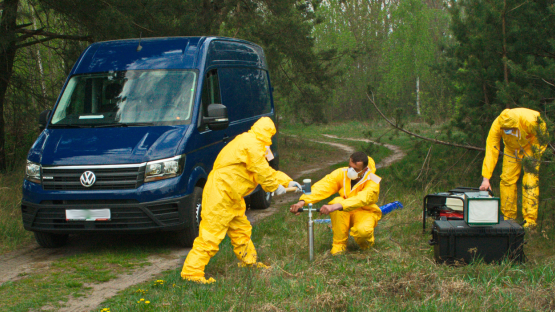When forest fires occur on sites with significantly elevated radiation levels, as in the Chornobyl Exclusion Zone straddling Ukraine and Belarus last month, officials and the public want to know whether there is an elevated level of radiation risk. While there was no such risk in the series of wildfires in northern Ukraine in the zone, just 16 kilometres from the Belarusian border, new equipment sent by the IAEA will better prepare for radiation monitoring in the future.
Forest fires are recurring events in the abandoned areas of the Chornobyl Exclusion Zone, a 4760 square-kilometre area surrounding the nuclear power plant, mainly uninhabited since the Chornobyl nuclear accident in 1986. In such circumstances, sound scientific data is needed to ensure the appropriate response and protect the health of the public and of directly affected personnel, such as firefighters, forest workers, border guards, scientists and technicians working in the zone.
Responding to the country’s request, the IAEA helped to design and procure a mobile laboratory to Belarus, complete with instruments and tools for the radiation monitoring of air and the environment.
“The dedicated work of IAEA specialists and Belarusian counterparts allowed the design and delivery of a well-equipped and fit-for-purpose mobile laboratory to support Belarus in prompt response to contemporary radiological threats due to forest fires in the Chornobyl Exclusion Zone,” said Peter Swarzenski, Acting Director of the IAEA Environment Laboratories.
The mobile laboratory is capable of off-road operations and serves as a work platform for a crew of four in the field. It is equipped with a portable air sampling device, a handheld gamma-spectrometer, a radiation monitor for environmental sample measurements, a soil sampling kit, personal protection garments, navigation and communication tools, an electric generator and a workplace with a computer and other appliances.





